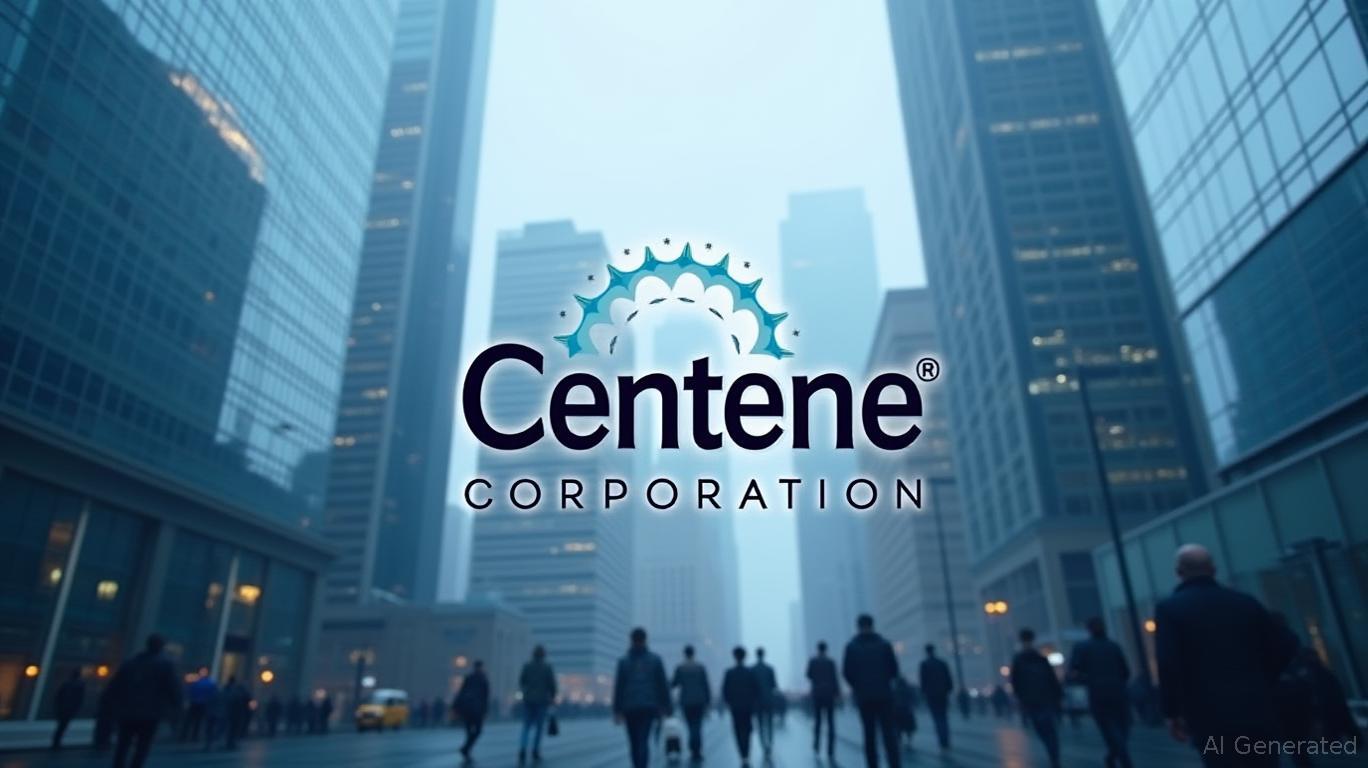Centene Corporation's Margin Recovery Inflection Point: How Disciplined Execution is Driving a Turnaround
Centene Corporation (CNC) has long been a bellwether for the managed care industry, but its recent financial performance suggests a critical shift: the company may finally be turning the corner on margin pressures. After years of grappling with elevated medical cost trends and regulatory headwinds, Q1 2025 results reveal a disciplined execution strategy that's creating an inflection point for profitability. Let's unpack the data behind this narrative and assess its implications for investors.

The Margin Recovery Story: Breaking Down the Numbers
At the heart of Centene's turnaround is its ability to navigate a complex mix of medical cost dynamics and operational efficiency. The company's Health Benefits Ratio (HBR)—a key metric for insurers—rose slightly to 87.5% in Q1 2025 from 87.1% in Q1 2024. While this might seem counterintuitive to a margin recovery story, the nuance lies in the segments driving the change.
- Medicaid pressures: The Medicaid HBR increased due to higher utilization from influenza-like illnesses, which strained costs. This reflects a return to pre-pandemic medical acuity levels after 2024's temporary redetermination-related relief.
- Medicare tailwinds: The Medicare HBR dropped, however, thanks to the Inflation Reduction Act (IRA), which expanded benefits (e.g., lowering drug costs) and reduced acuity in the program.
The net effect is a marginal HBR rise, but the story isn't just about costs—it's about leverage. Centene's SG&A expense ratio improved dramatically, falling to 7.9% from 8.9% in 2024. This reflects two critical levers:
1. Revenue scaling: Higher premium and service revenues (+17% YoY to $42.49 billion) allowed expenses to be spread over a larger base.
2. Strategic business mix: The booming Medicare Prescription Drug Plan (PDP) segment, which operates at lower SG&A than other lines, now accounts for a larger share of revenue.
Date | Premium Income YoY% |
|---|---|
| 20200331 | -- |
| 20200630 | -- |
| 20200930 | -- |
| 20201231 | -- |
| 20210331 | -- |
| 20210630 | -- |
| 20210930 | -- |
| 20211231 | -- |
| 20220331 | -- |
| 20220630 | -- |
| 20220930 | -- |
| 20221231 | -- |
| 20230331 | -- |
| 20230630 | -- |
| 20230930 | -- |
| 20231231 | -- |
| 20240331 | -- |
| 20240630 | -- |
| 20240930 | -- |
| 20241231 | -- |
Name |
|---|
| CenteneCNC |
| CenteneCNC |
| CenteneCNC |
| CenteneCNC |
| CenteneCNC |
| CenteneCNC |
| CenteneCNC |
| CenteneCNC |
| CenteneCNC |
| CenteneCNC |
| CenteneCNC |
| CenteneCNC |
| CenteneCNC |
| CenteneCNC |
| CenteneCNC |
| CenteneCNC |
| CenteneCNC |
| CenteneCNC |
| CenteneCNC |
| CenteneCNC |
Operational Efficiency Meets Strategic Growth
The real magic lies in how Centene is aligning its operations with high-growth markets. Its Medicare PDP business—driven by the IRA's drug cost reforms—has become a profit engine. Meanwhile, Marketplace enrollment surged beyond expectations, contributing to the $6 billion upward revision in 2025 revenue guidance (now $164–166 billion).
Centene's Days in Claims Payable (DCP) also dropped to 49 days, down from 53 in Q4 2024, as pharmacy claims processing improved. This metric is critical: lower DCP means faster cash flow, reducing the need for costly short-term financing.
The company reaffirmed its full-year EPS target of > $7.25, a 15% increase from 2024's $6.30. With adjusted EPS up 28% YoY in Q1, the path to hitting this target is clearer than it's been in years.
Risks and the Road Ahead
No turnaround is without speed bumps. Centene faces challenges in:
- Medical cost trends: Medicaid's post-pandemic acuity rebound could persist, pressuring margins.
- Regulatory uncertainty: The IRA's full impact remains unclear, and further changes to Medicaid or Medicare could disrupt plans.
- Marketplace competition: Higher enrollment growth may attract rivals, squeezing margins in this key segment.
Investment Implications: A Buying Opportunity?
Centene's Q1 results validate its narrative of disciplined execution. While risks remain, the company's focus on high-margin segments (Medicare PDP, Marketplace) and cost controls suggest a sustainable margin recovery.
Investment thesis:
- Buy on dips: CNC's stock has underperformed peers amid margin concerns, but its Q1 results and revised guidance suggest a re-rating is possible.
- Hold for the long term: The Medicare and Marketplace markets are secular growth areas, and Centene's scale and expertise give it an edge.
Final Take
Centene's margin recovery isn't a fluke—it's the result of strategic choices to capitalize on regulatory tailwinds while tightening operational discipline. For investors, this inflection point presents an opportunity to own a managed care giant at a critical juncture. As the company executes against its $7.25+ EPS target, the path to higher multiples—and shareholder returns—is clear.
In a sector where margin volatility is the norm, Centene's Q1 performance shows it's now among the players rewriting the rules.

Comments
No comments yet